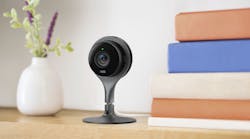The status of Google’s Brillo operating system for smart household devices has been murky. The code was only available through an invitation from Google and few devices had been built using it.
But Google said last week that it had released a preview of the software, a bare-bones version of Android for things like connected light bulbs and door locks. It includes support for several hardware platforms from Intel and others. The company also announced plans to simplify its Weave communications standard, which connects devices through Google’s cloud.
The preview of the operating system, which has been rebranded as Android Things, is the latest window into Google’s effort to translate the software inside 80% of smartphones into smart household devices. The effort dovetails with Nest Labs, the division of Google’s parent company Alphabet that makes smart thermostats and security cameras.
To start, the preview system can run on hardware platforms including Intel’s Edison and NXP Semiconductors’ Pico, as well as the Raspberry Pi 3. Developers can scale to large production runs with custom designs of these boards, the company said. The preview is available for download on Google’s developer site.
Google also said that it planned to build “infrastructure” around the operating system for pushing regular patches and security fixes to devices. To bolster security, devices will also receive direct updates from Google, wrote Wayne Piekarski, a developer advocate at Google, in a blog post.
Google also updated the direction of Weave, its communications standard that allows devices like smart plugs and thermostats to talk with each other and Google’s cloud. The company said that it plans to use Weave to connect products to smartphones running either Android or Apple’s iOS.
Since Google announced that it was making Internet of Things software in 2015, Weave has found much more success than Brillo. Companies like Philips and Samsung are already using Weave in their connected devices. Honeywell and smart home hub maker Wink are among the companies testing it.
Google also revealed plans to merge its Weave protocol with the technology of the same name developed separately by Nest. After Google introduced its communications standard last May, the smart home company released its own version – confusingly also called Weave – last October. They have remained separate since then.
The plan to unify Weave comes after Nest sent developers from its platform team to work directly with Google in August. The restructuring, which was first reported by Fortune magazine, had the goal of creating a unified Internet of Things platform. The combined team is led by Hiroshi Lockheimer, Google’s vice president of Android and Chrome OS.


